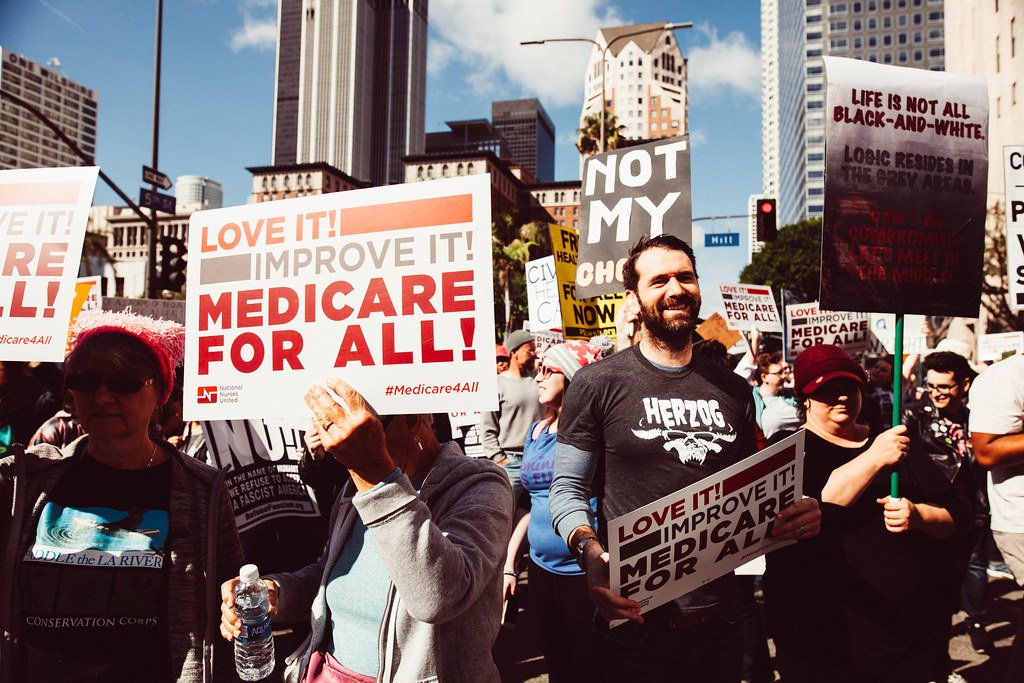
Greetings from an election-weary Pennsylvania. I hope I haven’t lost you along the way, as I’ve tried to lead you to some understanding of how the American healthcare system works for senior citizens. In this ‘instalment’ I would like to talk about the costs of Medicare, what supplemental insurance is, and what it costs me. Just a reminder: I can only speak from my own experiences in this, and am in no way putting myself forward as any kind of expert.
‘Original Medicare’ payments are deducted from your Social Security, or railroad retirement or whatever other retirement payments you have. What you get per month in Social Security [which is broadly similar in principle to the UK state retirement pension] depends on how much money you made during your working career. It was always intended to be a supplement to your retirement income, but there are many people in this country for whom it is the only source of income after they retired. I feel so sorry for fellow teachers who retired before teacher salaries went up, because they only get a crappy pension amount; they also get very little Social Security. Imagine basing your retirement on an annual income of $6700 (approximately £5188 today), which is what I signed my first teaching contract for in 1973!
In this section I am quoting from my eight-page Social Security statement; these deductions are all monthly. The basic fee for Medicare part A (hospitals) is $437 (£338) a month. What you pay for Medicare B (doctors) is based on your total annual income, as reflected in your annual tax returns, so although the basic Medicare B premium in 2020 was $144.60 (£112), I pay $376 (£291) per month because of my income. I also pay an additional $50.70 (£39) each month for Medicare part D (prescription drugs) – even though I did not purchase, nor do I benefit in any way, from Medicare part D!! When I first found this out, I thought it was impossible, but yes, they can actually do that. It seems that there are five different levels of IRMAA – “Income Related Monthly Adjustment Amount.” As I fall into category three, I basically pay more than 2.5 times the standard premium, although I could end up paying four times more if I had additional income.
And this is all before supplemental insurance is added on top: since Medicare only pays 80% of what they think your medical care should cost, you need some kind of additional insurance to pay for the rest.
During open enrolment, you are absolutely flooded from every direction with advertisements from companies who want you to choose their supplemental insurance. For me the choice was easy: teachers in Pennsylvania have access to something called the Health Options Program or HOP. After attending a morning-long seminar explaining the program, and hearing nothing but good things about it from other people, I opted in right away, and I have not regretted that decision. In 2019 I paid $239 (£185) per month, of which $100 (£77) was paid back to me by the school employees’ retirement system. This assistance is not provided for any other supplemental insurance, and should you choose to leave HOP for another type of insurance, you cannot re-enter the system. So I am feeling very lucky with this and I’m staying put.
As we are in the midst of open enrolment, I recently received my annual 116-page HOP handbook and my personal statement for the coming year. This is another 13-page document full of information, and shows me the 2021 premiums should I opt to change my level within the insurance plan. Depending on which level you choose, your out-of-pocket costs will vary greatly. There is an annual deductible, a co-pay for doctor visits, a higher co-pay for specialist visits, a fee for visiting the emergency room (ER) – which may be deducted if you are admitted to the hospital, a fee for urgent care facilities… and the list goes on and on. In my case I pay $10 (nearly £8) to go my primary doctor, and $20 (£15.50) to visit a specialist. An ER visit would be $40 (£31), and depending on what tier of drugs I’m taking, there may be a $100 (approximately £77) annual deductible for those too. My monthly premium will increase to $179 (almost £139) in the coming year.
Now here it is important to note that teacher pensions in the state of Pennsylvania never, ever go up. There has never been, nor is there likely to ever be, any sort of cost-of-living adjustment because of inflation. So in effect, my take-home pension gets lower every year.
My personal statement from HOP also outlines the other plans they offer, of which I count eight, plus four different advantage plans from private companies, and five different value plans for people with lower incomes. Of course, the monthly premiums vary greatly, and if you choose a lower-priced plan, all of your out-of-pocket costs will increase.
Whatever the total monthly premiums – in my case, around $1000 (£774) – you have to understand that it really doesn’t pay for anything as such. Think of it as the ante in a poker game… It just means you are allowed to play, but most everything after that will be extra. There are co-pays for going to the doctor, money for prescriptions… It’s all extra: a monthly premium basically gets you nothing, in and of itself.
So there you have it… what this retired school teacher pays for his medical care. Next time, I will attempt to explain prescription drugs and what they might cost. And if there is one part of this system that drives us all crazy, drugs will be it. So stay tuned for the further adventures of –
John from across the pond
In case you missed them, here are John’s previous articles:




